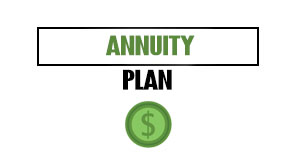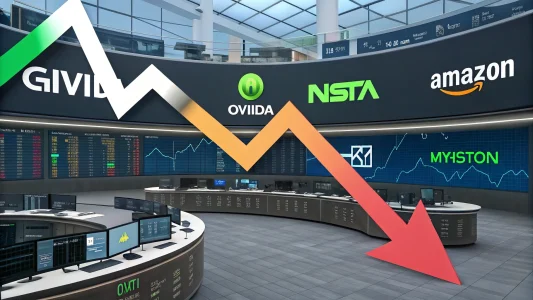This is a familiar story among entrepreneurs. Having bootstrapped your business and reinvested everything to scale, you’re in your 40s or 50s with little retirement savings. Don’t worry, you’re not alone.
SCORE reported that 34% of entrepreneurs had no retirement plan in 2019. Recently, however, the 2025 WealthRabbit Small Business Retirement Report found that nearly one out of five small businesses have no retirement savings, and most have saved less than $50,000. In addition, the study found that entrepreneurs between 45 and 55 saved a median of $50,000, which is far less than the $1.2 million financial experts recommend for someone earning $120,000. Further, their 401(k) balances are considerably lower than those of their peers who work in corporations, who generally have 401(k) balances of $152,100 to $199,900.
But, it’s not all doom and gloom. You’re not out of time.
As a business owner, you usually prioritize growth, staffing, product development, or just keeping the business afloat while saving for retirement. As time passes, the question pops up: “What will I do when I stop working? ” The good news? Even if you got a late start, it’s possible to catch up.
In this post, you’ll learn how to build a powerful retirement strategy on a compressed timeline without compromising your cash flow.
Table of Contents
ToggleShift Your Mindset from “Later” to “Now”
First, we need to change our mentality, not our finances.
Don’t keep telling yourself that you’ll “get to it later” because it’s already long overdue. At the same time, you don’t need to jump from $0 to seven figures overnight. However, you need to begin treating your retirement as seriously as your business projections.
In short, waiting only compounds the problem. The good news is that being an entrepreneur gives you access to tax-advantaged retirement accounts with higher contribution limits than traditional employee plans. So, make sure to use that to your advantage.
Choose the Right Catch-Up Retirement Account
There’s no shortage of retirement accounts designed specifically for business owners. Here are some of the best options for getting started;
SEP IRA (Simplified Employee Pension)
- Who it’s for: Small business owners or solopreneurs.
- Contribution limit: Up to 25% of your compensation in 2025, with a maximum of $70,000. That’s up $1,000 from $69,000 in 2024.
- Tax advantage: Contributions are tax-deductible.
- Bonus: Compared to other retirement plans, SEP IRAs are easier to set up and generally cost less to administer.
Overall, with a SEP IRA, you can make catch-up contributions even if you’re still scaling.
- Who it’s for: Business owners or self-employed individuals without full-time employees (except for a spouse).
- Contribution limit: As of 2025, If you are under 50, you can contribute up to $70,000 to a solo 401(k), or if you are over 50, you can contribute up to $77,500. This limit applies to both employee and employer contributions. As an employee, you can contribute up to $23,500, plus an additional $7,500 if you’re 50 or older (or $11,250 if you’re 60 or older), and then your employer can contribute up to 25%.
- Tax advantage: A traditional Solo 401(k) is tax-deferred. Until you withdraw the retirement funds, you don’t pay taxes on the investment earnings. Alternatively, you can lower your current taxable income by contributing to a Solo 401(k).
- Bonus: Solo 401(k) plans usually have a Roth option as well. Roth Solo 401(k)s allow you to contribute after-tax dollars and withdraw tax-free upon retirement.
If you’re in your 50s and looking to save quickly, solo 401(k)s are more flexible than SEP IRAs.
Traditional or Roth IRA
- Contribution limit: Contributions to Traditional and Roth IRAs are limited to $7,000 together in 2025. If you are 50 or older by the end of the year, the limit increases to $8,000 per year. In either case, this limit applies regardless of how many IRAs you have.
- Tax advantage: This depends on the type. In a traditional IRA, contributions are tax-deductible now, and withdrawals from the account are taxed later. Roth IRAs, however, offer no tax break now (contributions are not deductible) and no taxes in retirement (qualified withdrawals are tax-free).
When you’ve maxed out other plans or want to keep an account outside your business, IRAs can be a great option.
Automate Your Contributions
The biggest hurdle entrepreneurs face when saving for retirement? Inconsistent income. After all, when your monthly cash flow fluctuates, it’s hard to commit to saving.
The solution? Whenever possible, automate and adjust.
Here’s how to get the ball rolling;
- Start small. Even if it’s only $100 at first, set up weekly or monthly transfers. It is much easier to get into the habit if you set up automatic transfers.
- Use percentage-based contributions. Rather than allocating fixed amounts to retirement, allocate a set percentage of monthly revenue or profit to it. With this, your business can scale up or down as needed.
- Reassess quarterly. Every quarter, evaluate your savings rate, just as you would your ad spend or inventory. Consider bumping it up if you’re ahead of schedule.
In the end, decision fatigue is eliminated by automation. And, most importantly, it’s not about perfection, but about momentum.
Use Tools to Manage Variable Cash Flow
It’s tough to plan for the future when your income is anything but consistent. That’s why the right tools matter.
Think of Due as your personal finance hub for retirement planning. In particular, Due is an independent publication that offers actionable retirement solutions for entrepreneurs, freelancers, and small business owners. A primary focus of its service is helping users plan for retirement through guaranteed income products, most notably annuities.
YNAB is an app that helps you assign each dollar a job. With YNAB, you can see where your money is going, including payroll, taxes, and retirement contributions.
If you’re already managing business finances here, take advantage of what you’ve already learned. You can use QuickBooks to;
- Track your expenses
- Forecast cash flow
- Keep your personal and business finances separate
Together with a CPA or bookkeeper, it helps identify how much you can set aside each month safely for retirement.
Robinhood is no longer just for day traders. With it, you can;
- Set up recurring investments
- Invest in ETFs, stocks, or even crypto
- Customize the frequency, whether weekly, bi-weekly, or monthly
It’s not an exclusive retirement platform, but it’s a simple way to grow long-term wealth.
Consider a Business Exit Strategy
Eventually, your business may become your retirement plan. However, don’t rely on future sales to survive.
Think about these questions;
- Is it possible to sell your business without you?
- Are there systems and processes that make it turnkey?
- Would a buyer see value, or is it just personal branding?
A good exit strategy should be considered as early as possible. Even if you aren’t ready to sell your business, putting infrastructure in place can make it more efficient and valuable over time.
Make Up for Lost Time with Smart Investments
If you are behind on your retirement savings, your money will have to work harder for you. In other words;
- Maximizing your tax-advantaged accounts first.
- Diversifying your portfolio with index funds, ETFs, and maybe higher-risk growth assets if you have the time.
- Maintain your contribution levels as your income rises rather than succumbing to lifestyle creep.
Keep in mind that you may still have 30+ years of compounding to look forward to, even if you’re in your 40s or 50s. It’s not the end of the world if you start late.
Final Thought: The Best Time Is Now
You’re indeed starting later than you had planned. Fortunately, there’s still time to act.
In your role as an entrepreneur, you’ve already proven that you can build something from scratch. It’s just another long-term project, one that needs to be addressed now.
To build your financial future, use the same tools, discipline, and creative problem-solving methods that helped you develop your business. Where possible, automate. Get help when you need it. And, be ready to take action now, not when the “perfect time” comes along.
When you use the right strategy and the right tools, you can still finish strong despite a late start.
Image Credit: David McEachan; Pexels

















